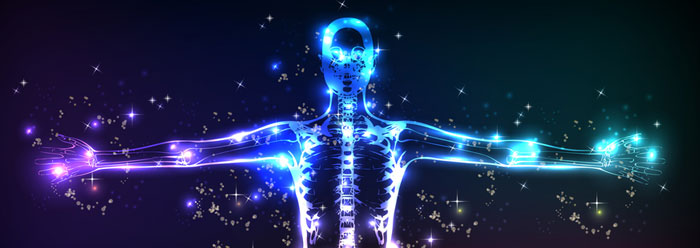 Over four years have passed since Lee Berger’s discovery of Homo naledi bones in the Rising Star Cave system of South Africa.1 Yet, back-and-forth bone disputes in the scientific literature leave many still wondering what these fossils truly represent. Is H. naledi some type of human, or does it better match an extinct ape like the famous Australopithecus “Lucy”? To answer this question, I examined the latest published research on the anatomy of the varied H. naledi specimens.
Over four years have passed since Lee Berger’s discovery of Homo naledi bones in the Rising Star Cave system of South Africa.1 Yet, back-and-forth bone disputes in the scientific literature leave many still wondering what these fossils truly represent. Is H. naledi some type of human, or does it better match an extinct ape like the famous Australopithecus “Lucy”? To answer this question, I examined the latest published research on the anatomy of the varied H. naledi specimens.
Two known chambers contained H. naledi bone fragments: the original Dinaledi Chamber and a newer site called the Lesedi Chamber.2 Lee Berger’s team recently reopened the excavations in both chambers, finding additional bones in the Dinaledi Chamber.3 They also found a third cave chamber at a nearby site that reportedly has additional H. naledi bones.4
But God clearly communicates in Genesis that there is no evolution linking His created kinds. ![]()
Of course, the secular world hailed this discovery as some type of human ancestor. But God clearly communicates in Genesis that there is no evolution linking His created kinds. Therefore no evolution links the ape-like H. naledi to mankind.
So, what is H. naledi? A couple of creation scientists weighed in on the debate, first claiming the bones represented some type of human. They believed the presence of the bones inside the cave indicated intentional burial of the dead.5-7 These creationist studies focused primarily on the skull and dental features of the specimens and on secular geological interpretations for deliberate disposal.
 In response, other creation scientists studied the bones, including the postcranial characters like vertebrae and ribs,8,9 and the deliberate disposal hypothesis suggested by secular scientists.10 Their findings showed that H. naledi falls not within the human (Homo sapiens) kind but within the Australopithecus kind. Essentially, this makes H. naledi another example of an extinct ape, the same kind as Lucy.
In response, other creation scientists studied the bones, including the postcranial characters like vertebrae and ribs,8,9 and the deliberate disposal hypothesis suggested by secular scientists.10 Their findings showed that H. naledi falls not within the human (Homo sapiens) kind but within the Australopithecus kind. Essentially, this makes H. naledi another example of an extinct ape, the same kind as Lucy.
Essentially, this makes H. naledi another example of an extinct ape, the same kind as Lucy. ![]()
My own research examined the disposal hypothesis and found that the presence of bones in two nearby but separate chambers makes deliberate disposal in the hard-to-reach Dinaledi Chamber highly unlikely.10 The majority of the bones in both chambers were quite disarticulated and fragmented, and no artifacts like stone tools or jewelry were found to indicate a ritual burial typical of humans. Instead, the H. naledi bones could have simply washed into both chambers nearly simultaneously during Ice Age flooding episodes of the cave system.
A final research paper compared the brain size (endocranial volume) to body mass of various human groups and hominins, including H. naledi (Figure 1).11 Jean O’Micks found that H. naledi clusters closest to Australopithecus and Paranthropus and “give[s] further support to the idea that H. naledi is not a member of the human holobaramin [kind], but is rather a species of ape, most likely an australopithecine.”11
There are no “almost human” ancestors, only humans and apes—two separate kinds—just as God created them around 6,000 years ago. ![]()
So, what is the verdict on H. naledi? Detailed research shows that it is nothing more than another species of extinct ape—another version of Lucy. There are no “almost human” ancestors, only humans and apes—two separate kinds—just as God created them around 6,000 years ago.
References
- Berger, L. R. et al. 2015. Homo naledi, a new species of the genus Homo from the Dinaledi Chamber, South Africa. eLife. 4: e09560.
- Hawks, J. et al. 2017. New fossil remains of Homo naledi from the Lesedi Chamber, South Africa. eLife. 6: e24232.
- Greshko, M. 2017. Cave Explorers Find New Fossils of Mysterious Human Relative. National Geographic. Published on nationalgeographic.com on September 13, 2017, accessed September 16, 2017.
- Revealed during Lee Berger’s talk at the Perot Museum in Dallas, Texas, on October 11, 2017.
- Wood, T. C. 2016. An evaluation of Homo naledi and “Early” Homo from a Young-Age Creationist Perspective. Journal of Creation Theology and Science Series B: Life Sciences. 6: 14-30.
- Wood, T. C. 2017. Identifying Humans in the Fossil Record: A Further Response to O’Micks. Answers Research Journal. 10: 57-62.
- McLain, M. 2017. Reply to O’Micks Concerning the Geology and Taphonomy of the Homo naledi Site. Answers Research Journal. 10: 55-56.
- O’Micks, J. 2016. Homo naledi Probably Not Part of the Human Holobaramin Based on Baraminic Re-Analysis Including Postcranial Evidence. Answers Research Journal. 9: 263-272.
- O’Micks, J. 2017. Further Evidence That Homo naledi Is Not a Member of the Human Holobaramin Based on Measurements of Vertebrae and Ribs. Answers Research Journal. 10: 103-113.
- Clarey, T. L. 2017. Disposal of Homo naledi in a possible deathtrap or mass mortality scenario. Journal of Creation. 31 (2): 61-70.
- O’Micks, J. 2017. Likely Discontinuity Between Humans and Non-Human Hominins Based on Endocranial Volume and Body Mass with a Special Focus on Homo naledi – A Short Analysis. Answers Research Journal. 10: 241-243.
* Dr. Clarey is Research Associate at the Institute for Creation Research and earned his Ph.D. in geology from Western Michigan University.












